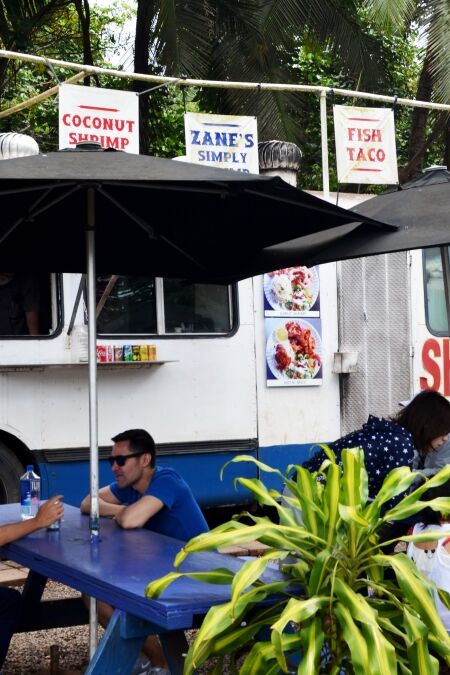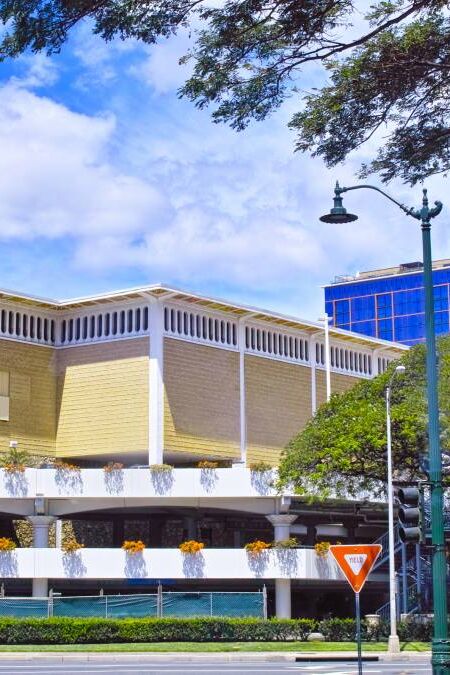Kilauea Visitor Center, located at the entrance of Hawaii Volcanoes National Park, serves as the perfect starting point for visitors eager to explore the park’s rich volcanic landscape. Open daily, this hub offers essential information, interactive exhibits, and ranger-led programs that enrich the experience of witnessing one of the most active volcanoes in the world. This article provides a comprehensive guide to the Kilauea Visitor Center, detailing its facilities, exhibits, programs, and tips for making the most of your visit.
Highlights
- Discover the geological history and cultural significance of Kilauea volcano through engaging exhibits that include interactive displays, historical artifacts, and multimedia presentations.
- Take advantage of the expertise of park rangers who offer guided tours, informative talks, and answer visitor questions.
- Enjoy breathtaking views of the Kilauea Caldera and Halemaʻumaʻu Crater from designated observation points, providing a unique perspective on one of the most active volcanoes in the world.
- Watch educational films and presentations in the visitor center’s theater, offering deeper insights into volcanic activity, native flora and fauna, and the cultural history of the area.
- Families with children can enjoy specially designed programs and activities that make learning about volcanology and the natural environment fun and engaging for young explorers.
- Browse the gift shop for unique souvenirs, books, maps, and local crafts that commemorate your visit and support the park’s conservation efforts.
Overview
Kilauea Visitor Center is an essential part of Hawaii Volcanoes National Park, offering visitors a gateway to understanding the dynamic volcanic environment of Kilauea. The center has evolved over the decades, expanding its exhibits and educational programs to better serve the public and enhance their appreciation of this unique geological wonder. From its early days as a simple information post, it has grown into a comprehensive resource with interactive displays, historical artifacts, and detailed maps, providing a rich context for the ever-changing landscape shaped by volcanic activity.
Visitor Center Facilities
Kilauea Visitor Center boasts a range of facilities to enhance your visit, including clean restrooms and well-maintained picnic areas for a comfortable break. The gift shop and bookstore offer a variety of souvenirs, books, and educational materials about the park and its volcanic activity. While there are no dining options directly at the center, several nearby restaurants in the town of Volcano provide a diverse selection of meals, ensuring you stay refreshed and energized for your adventure.
Exhibits and Displays
Kilauea Visitor Center features an array of captivating exhibits and displays that delve into the geological and cultural significance of Kilauea and the surrounding areas. Key exhibits include detailed models of the volcano, historical artifacts, and multimedia presentations that illustrate the volcanic processes. Interactive displays allow visitors to engage with the material hands-on, enhancing their understanding through educational resources. The center also hosts both temporary and permanent exhibits, ensuring there’s always something new to discover, from recent volcanic activity updates to in-depth explorations of the region’s natural and cultural history.
Ranger-Led Programs
Kilauea Visitor Center offers a variety of ranger-led programs and tours that provide an in-depth exploration of Hawaii Volcanoes National Park. These programs include guided hikes, informative talks, and evening walks that highlight the park’s unique geological features and cultural history. Popular programs, such as the “Explore the Summit” offer unique insights and spectacular views. Schedules and booking information for these programs are available at the visitor center and on the park’s official website, ensuring visitors can easily plan and participate in these enriching experiences.
Educational Resources
Kilauea Visitor Center is a hub for educational resources, offering workshops and educational sessions that delve into the park’s volcanic activity, ecology, and cultural heritage. These programs are designed to cater to a wide range of audiences, including school groups and educators, providing tailored resources and guided learning experiences. Additionally, the center offers volunteer opportunities for those looking to contribute to the park’s preservation and educational outreach, making it a valuable resource for both visitors and the local community seeking to deepen their understanding of this unique environment.
Exploring the Surrounding Area
Exploring the area surrounding the Kilauea Visitor Center reveals a wealth of attractions and points of interest within Hawaii Volcanoes National Park. Visitors can embark on recommended hiking trails like the Crater Rim Trail and the Kilauea Iki Trail, which offer breathtaking views of the volcanic landscape and lush rainforests. Scenic spots such as the Jaggar Museum and Thurston Lava Tube provide unique glimpses into the park’s geological wonders. Additionally, the park is a haven for wildlife enthusiasts, with opportunities to spot native birds, Nene geese, and vibrant Hawaiian flora, making every visit a memorable adventure.
Tips for Visiting Kilauea Visitor Center
- Plan: Check the park’s official website for current conditions, opening hours, and any alerts or closures.
- Arrive Early: Beat the crowds by visiting early in the morning, especially during peak tourist seasons.
- Dress Appropriately: Wear comfortable hiking shoes and layered clothing to adapt to changing weather conditions.
- Stay Hydrated: Bring plenty of water, as exploring the park can be physically demanding.
- Pack Snacks: Carry light snacks or a packed lunch, as dining options are limited within the park.
- Use Sun Protection: Apply sunscreen, wear a hat, and use sunglasses to protect yourself from the sun.
- Follow Safety Guidelines: Stay on designated trails, heed warning signs, and be aware of volcanic hazards.
- Bring Binoculars: Enhance your wildlife viewing experience by bringing binoculars for bird watching.
- Attend Ranger Programs: Take advantage of the free ranger-led programs for a deeper understanding of the park.
- Respect the Environment: Practice Leave No Trace principles by taking all trash with you and respecting the natural habitat.
Best Times to Visit
The best times to visit Kilauea Visitor Center are during the spring and fall months when the weather is mild and the park is less crowded. These seasons offer comfortable temperatures and clear skies, ideal for exploring the outdoor exhibits, hiking trails, and scenic viewpoints. Visiting early in the morning or late in the afternoon can also enhance your experience, providing serene and quieter moments to fully appreciate the stunning volcanic landscape. Additionally, these times often coincide with special ranger-led programs and fewer crowds, allowing for a more immersive and enjoyable visit.
Frequently Asked Questions (FAQs)
Kilauea Visitor Center is the primary visitor information center for Hawai’i Volcanoes National Park, offering exhibits, films, and ranger-led programs about the park’s volcanic landscape.
Kilauea Visitor Center is open daily from 9:00 AM to 5:00 PM, except on certain holidays.
At Kilauea Visitor Center, visitors can watch educational films, view exhibits about volcanic activity, and join ranger-led programs and guided walks.
There is no separate entrance fee for Kilauea Visitor Center; however, there is an entrance fee to access Hawai’i Volcanoes National Park.
Yes, Kilauea Visitor Center offers ranger-led guided tours and walks that provide insights into the park’s volcanic features and history.
Yes, Kilauea Visitor Center provides maps, brochures, and detailed information about the hiking trails and key attractions within Hawai’i Volcanoes National Park.
How to Get There
By Car
Driving to the Kilauea Visitor Center is a scenic and straightforward journey. From Hilo, take the Hawaii Belt Road (Highway 11) southbound. The drive is approximately 30 miles and will take around 45 minutes. Follow Highway 11 until you see signs for Hawaii Volcanoes National Park. Once you enter the park, continue on Crater Rim Drive until you reach the visitor center. Make sure to check park guidelines and road conditions before your trip.
By Bus
If you prefer public transportation, the Hawaii County Mass Transit Agency runs Hele-On Bus services to Hawaii Volcanoes National Park. From Hilo, you can catch the Hele-On Bus Route 11. The bus journey takes about 1.5 to 2 hours. Be sure to check the Hele-On Bus schedule for the latest timings and route information. Once you arrive at the park, the visitor center is a short walk from the bus stop along Crater Rim Drive.
Ignite Your Adventure
As the gateway to the fiery heart of Hawaii Volcanoes National Park, Kilauea Visitor Center offers an illuminating journey through the island’s volcanic wonders. Don’t let this adventure flicker out—plan your visit today and check the official website for the latest updates and program schedules. Embrace the spirit of exploration and let Kilauea’s vibrant energy ignite your passion for discovery.




